How to Cheat at Cards
Ever since playing cards were invented, card cheating has fascinated people. In fact, there are many magicians who perform special magic routines known as “gambling demonstrations” that showcase some of the same sleight of hand employed by expert card cheaters.
However, there is a major difference between using sleight of hand to “cheat’ in a magic trick and using it to cheat others out of money. From the simplest methods used when playing poker at home, to the complex methods used in high-stakes poker rooms around the world, this article explores how to cheat at cards.
Please Note: the following is for educational and entertainment purposes only. It was not written to help you start cheating at cards, but rather to help you identify and stop people from cheating when you play cards.
Minimal Skill Methods for Card Cheating
These methods of cheating are typically quite bold and require steady nerves more than any complex dexterity or sleight of hand.
Peeking or Glimpsing
It might seem too simple to be true, but one of the most common ways card players will cheat is by trying to peek at an opponent’s cards or at the top card or bottom card of the deck.
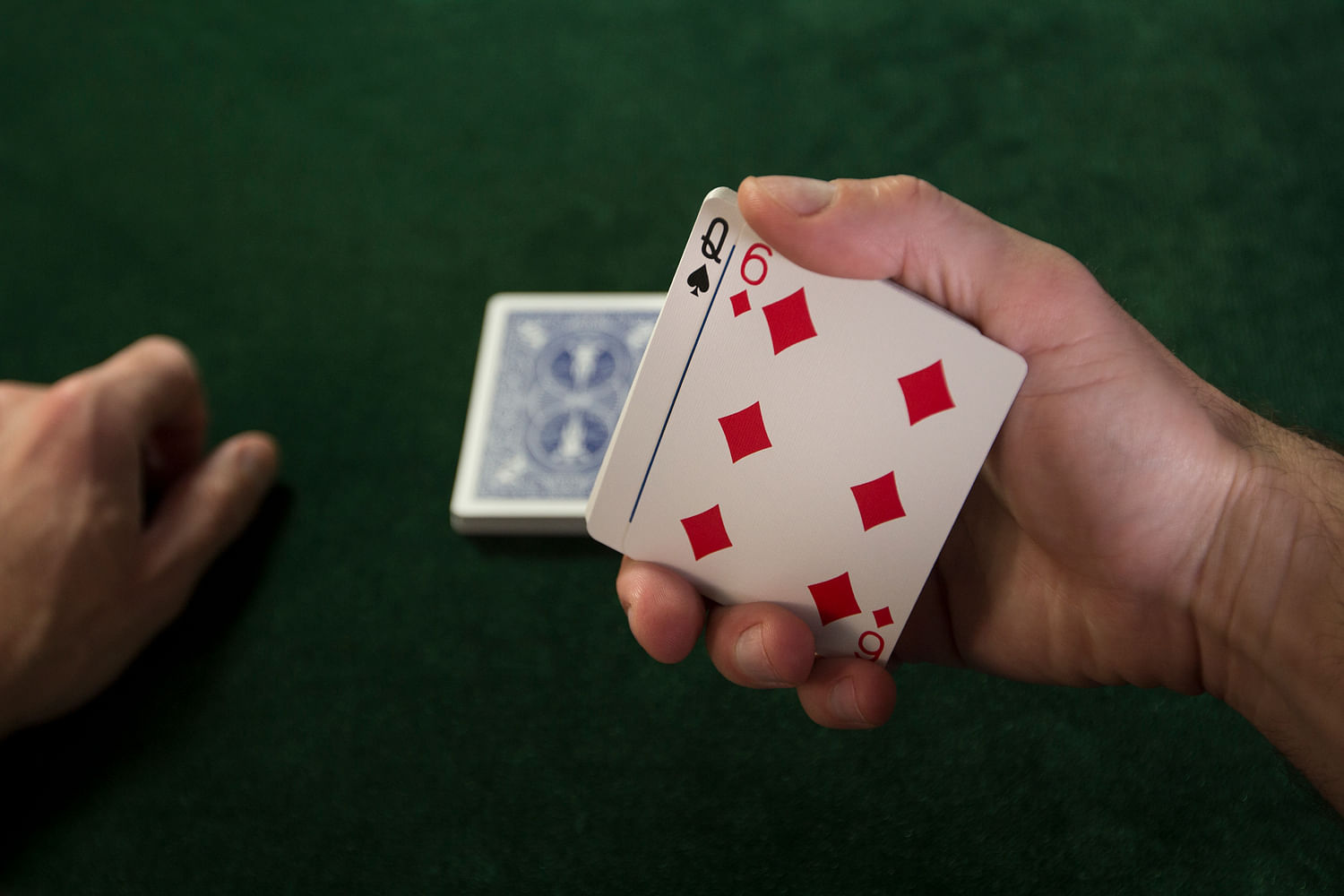
While the average cheater will attempt to peek by leaning their body a certain way or quickly darting their eyes, more advanced cheats will use a “shiner”—or reflective object that works like a covert mirror for cheating.
A shiner that is subtly placed in the right spot can allow the cheater to peek every card that is being dealt or even see another player’s hand. These days, the most typical shiner is the screen of a cell phone; however, some creative cheats have been known to use everything from a cup of black coffee to a butter knife.
Marked Cards
A marked card is any playing card that has been specially altered so the card cheat knows its identity without needing to see its face. This simple cheating method gives an incredible advantage to card cheats. For example, marking the Aces and Court Cards in Texas Hold’em allows you to know when to fold your hand or call a big bluff.
Marking is typically done during the first few rounds of a card game by either secretly scratching, denting, bending, or somehow altering the playing cards in a way that only those involved will notice. While a simple scuff with a fingernail is enough for most cheaters, some have employed more high-tech approaches such as invisible ink markings that could only be seen with a special pair of glasses or electronic poker cheating devices that look like they were plucked directly from a James Bond movie.
If you suspect a player might be using marked cards, politely request to change out the deck of cards. You can also use 100% plastic cards, like those found at casinos, because they are much harder to mark on the fly. (And, as an added bonus, these types of playing cards also last longer!)
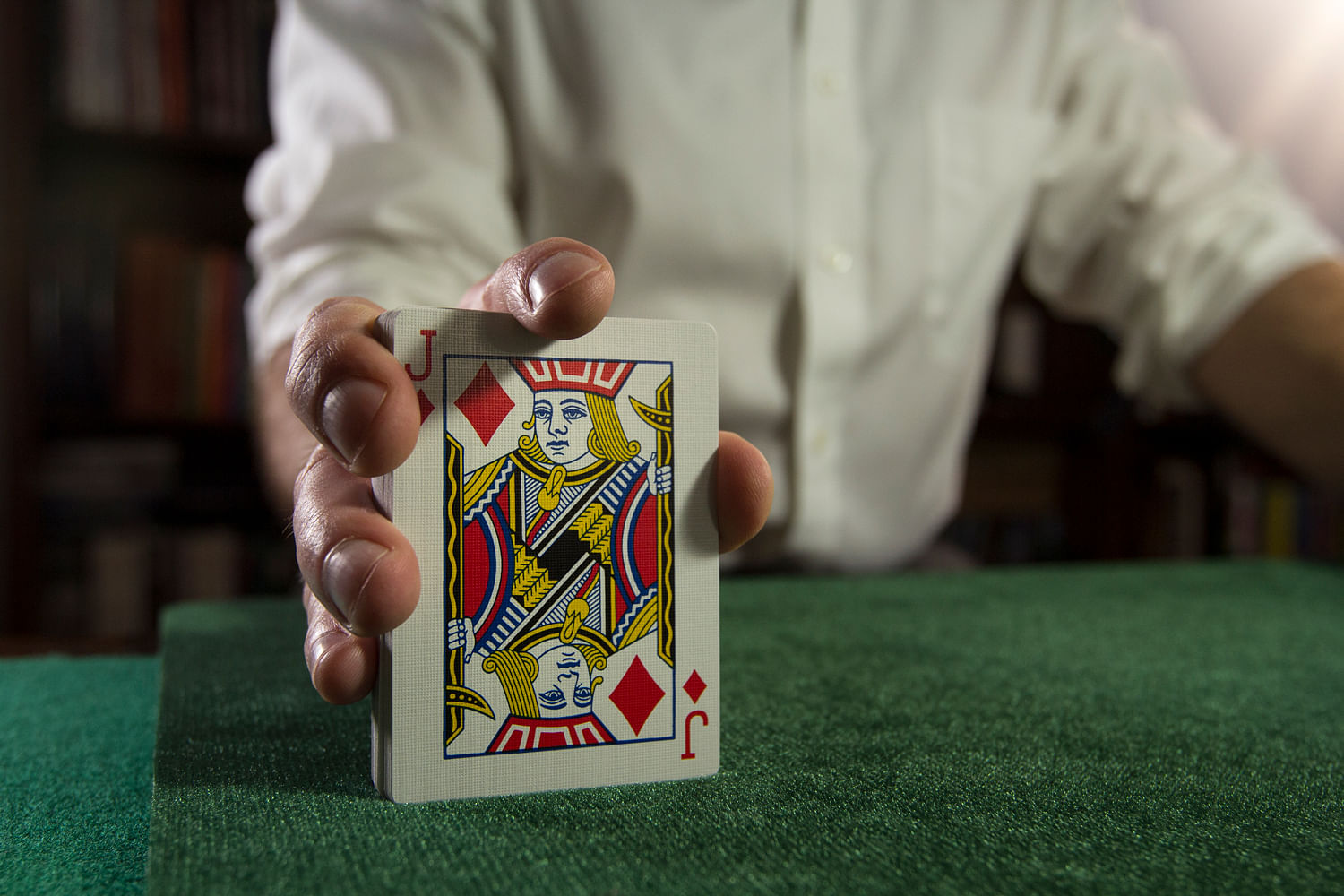
Collaborating with a Friend or “Soft Playing”
Soft playing is when two or more players collaborate to ensure that everyone else is eliminated before them. This is typically done by purposely avoiding betting against each other.
While soft playing technically isn’t cheating because it doesn’t break any rules, many avid poker players consider this to be one of the most unethical things you can do at a poker table. If 2 or 3 people are soft-playing at a 6-person table, it can ruin the integrity of the game.
Dumping Chips
Many players who work as confederates or soft play together may also dump chips toward the end of the game. This is where a group of players gives all their chips to one of their partners by making high or unconventional raises and then folding when their partner goes all in to match.
Dumping chips can significantly impact the endgame of any poker game or tournament. The player who was gifted the chips now has more money to take down the other players. Once they win, the big prize is then split up among everyone involved in the scam.
Hiding or Stealing Chips
Some card cheats may also covertly remove a portion of their chips during the game. This is known as “going south” or “ratholing” and typically uses palming or an odorless adhesive. By hiding chips, cheaters can preserve some of their winnings or prevent major losses in high-stakes games. These same methods are also used to steal from or short-change other players.
Cold Deck
A cold deck is a special deck of cards that has been pre-arranged ahead of time to have certain cards stacked at the top of the deck that guarantee the cheater will win. A smart cheater will typically stack the deck in a way that gives their victims a good hand as well (so they’re encouraged to bet more), just not one that is good enough to win the pot.
Switching in a cold deck is more easily done in casual card games where a new person deals the cards every hand.
Skilled Methods for Advanced Card Cheating
These methods of cheating are usually performed by a “card mechanic” or “card sharp”, and use sleight of hand and card manipulation to switch cards and deceive other players at the table.
False Shuffling/False Cuts
When you were reading about the cold deck above, you might have thought to yourself that a quick shuffle could easily ruin the stacked deck. That is very true and exactly why many card cheats will also use false shuffles or false cuts. These seemingly legitimate shuffles can be used to either maintain the order of the cards or even move certain cards to advantageous positions in the deck (also known as “stacking the deck”).
If a cold deck has already been switched in, the card cheat will typically perform a false shuffle known as a “top stock control” where the top of the deck containing the special stack of cards remains in order.
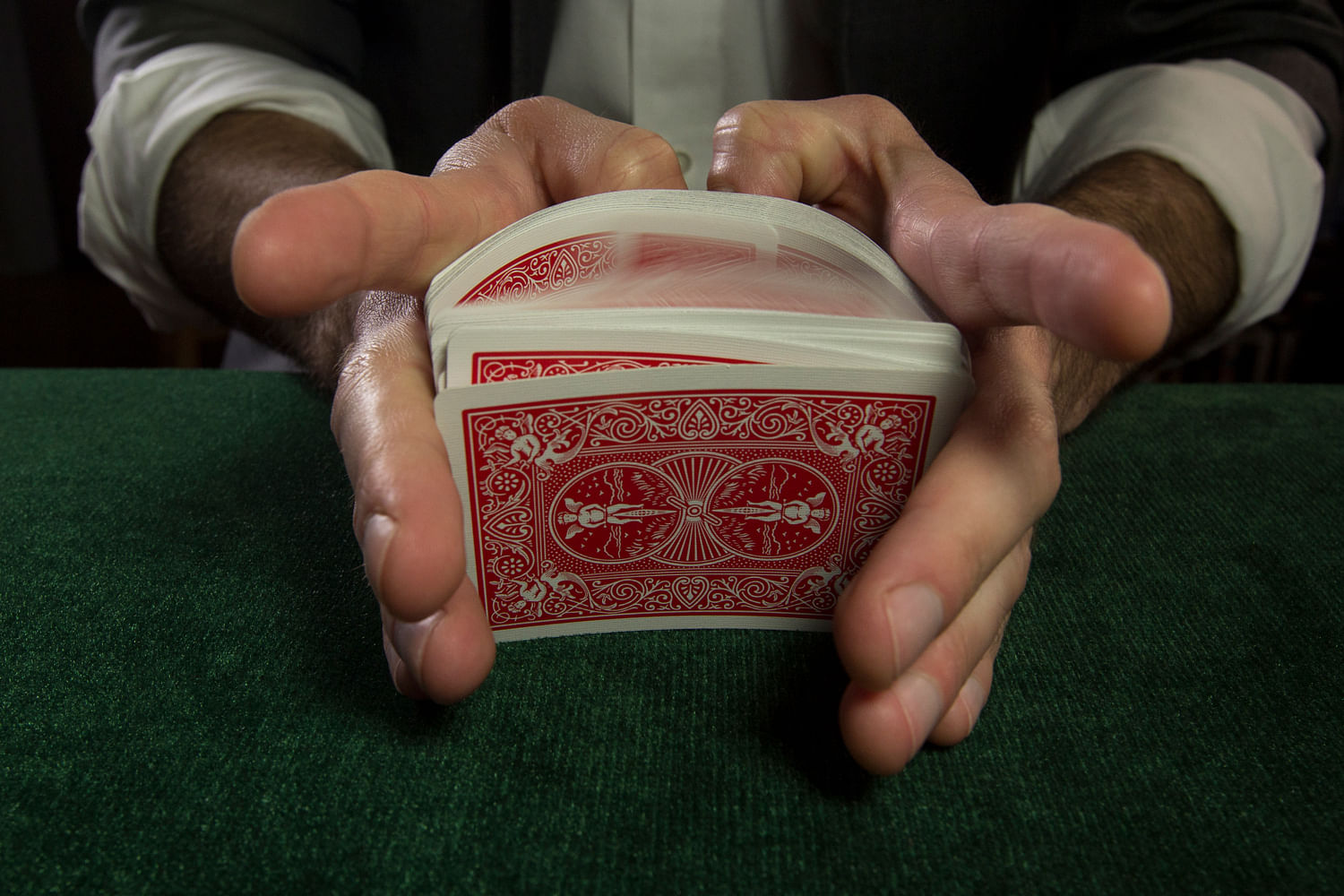
More accomplished card cheats will use false shuffles followed by a series of false cuts to stack the deck in a way that increases their chances of winning. For example, a card cheat sitting at a Texas Hold’em table with 4 other people secures two Aces at the top of the deck. With a quick overhand shuffle, they are able to move those cards to the 5th and 10th positions in the deck, ensuring they receive Pocket Aces when the cards are dealt.
Most average card cheats will conduct false overhand shuffles because they are easier to do and don’t require the years of practice necessary to perform undetectable false riffle shuffles. Therefore, if you notice a player randomly switching from a riffle shuffle to an overhand shuffle, there is a good chance they might be using a false shuffle to cheat.
False Dealing
False shuffling is also commonly combined with false dealing. False deals are meant to look like a card is being taken from the top like normal, but instead it’s being secretly plucked from another part of the deck and dealt to either the cheater or a confederate. Done correctly, false deals are extremely difficult to detect.
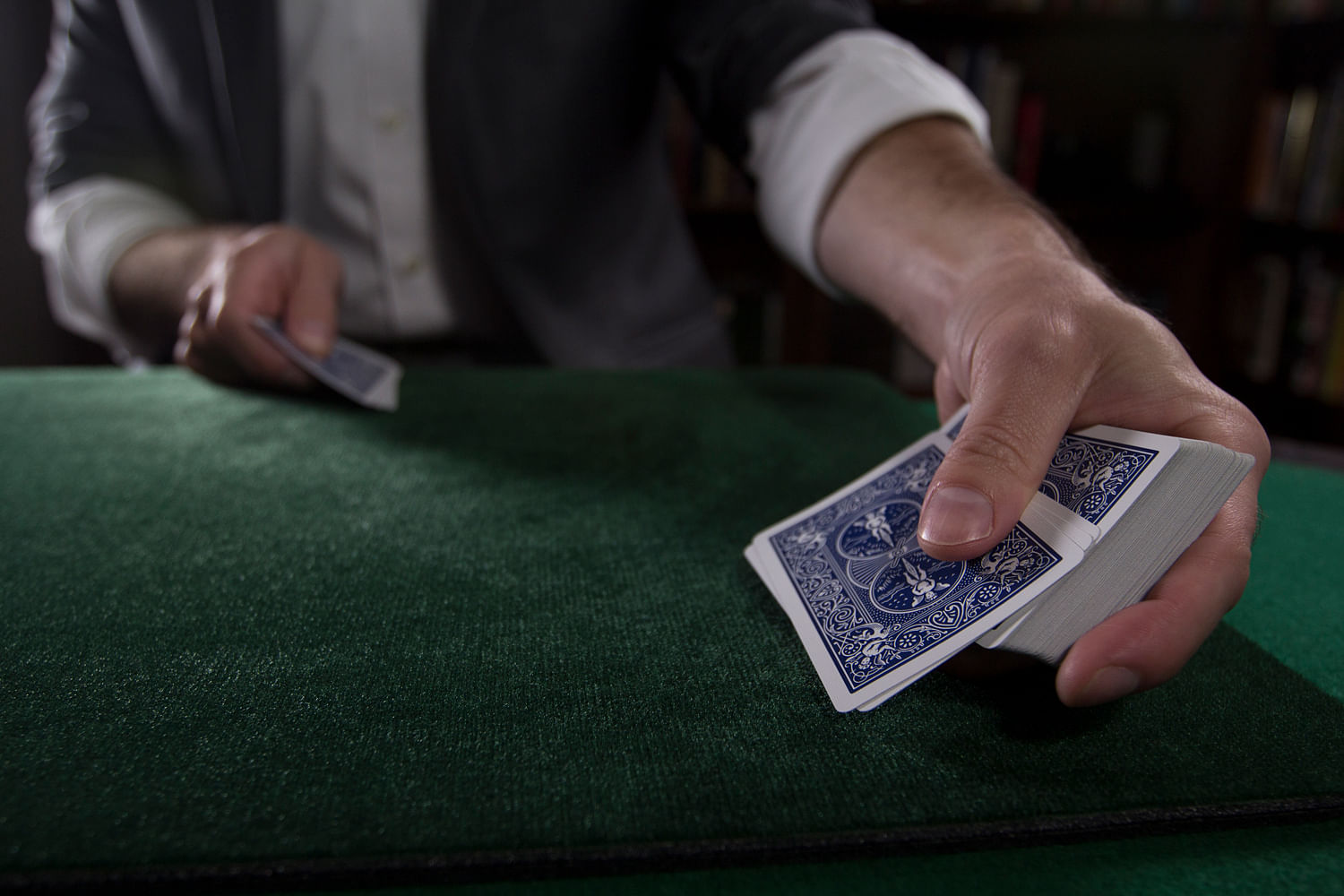
The most commonly used false deals are:
Second Deals: Also known as “dealing seconds”, this is where the desired card is moved to the top of the deck either by culling, palming, mucking or another form of sleight of hand. Then, as the cheat deals, they will push the top card over, deal the second card and simultaneously return the top card to its starting position creating the illusion that the top card is being dealt. They will then deal the actual top card to themselves.
Bottom Deal: As you may have noticed, the second deal only allows you to maintain control of one card. Therefore, more advanced card mechanics will use a bottom deal. Done fluidly, an accomplished sleight of hand artist can deal cards from the bottom of the deck in a way that truly looks like the top card is being dealt each time. This allows them to maintain as many cards as they want on the top of the deck for themselves.
The Bottom Deal is also one of the most difficult moves to perform well. A poorly executed Bottom Deal can be easily detected by a snapping sound or the bottom cards wedging out to the side. However, if you want to be extra safe, you can place 1 or 2 Jokers at the bottom of the deck before play begins.
Holding out or Mucking cards
There is also a subgroup of card cheats known as “hand muckers”. These cheaters specialize in switching cards, particularly by “mucking” or cleverly hiding them in their hand to be switched in later. In the 18th and 19th centuries, some cheaters were even known to use elaborate mechanical holdout devices.
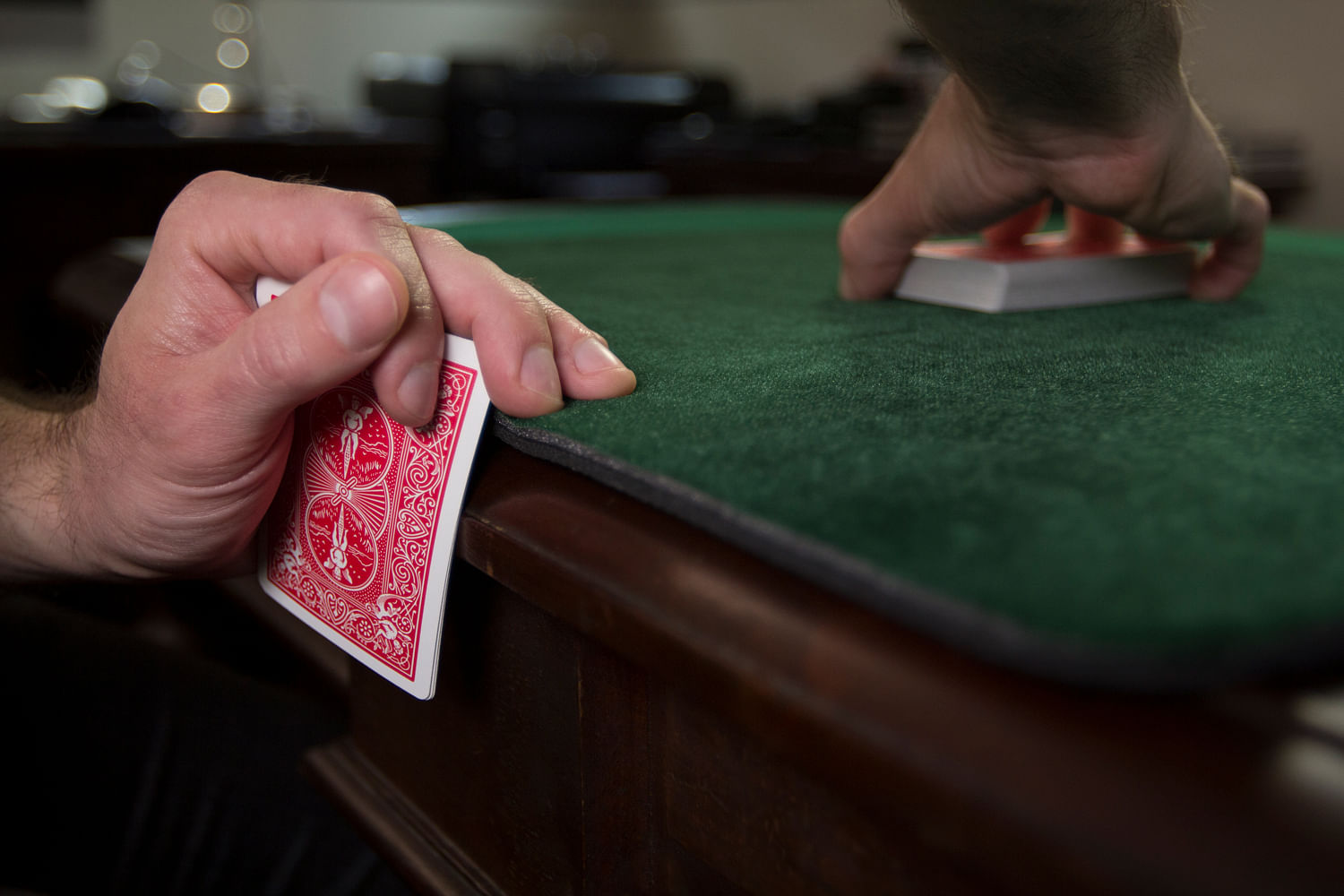
Cheating Online
As the popularity of poker sites continues to grow, card cheats have even found ways to rig online poker games.
One of the most common ways to cheat online is to create an army of robots that uses artificial intelligence to analyze each hand and make the optimal decision based on the information available. Well designed robots can run all day and night without the cheater even needing to be present. Since these robots have an inherent edge of human opponents, they will typically be profitable over large sample sizes.
However, in recent years, many online poker sites have gone to great lengths to identify and stop bot accounts. Therefore, we regret to inform you that your chances of losing an online poker game because of a poor in-game decision or bad luck are way higher than losing to a robot.
Helpful Tips for Preventing Cheating at your Card Games
- Don’t let the same person shuffle AND deal the cards. Instead have the person to the dealer’s left shuffle and the person to their right cut the cards before they are dealt.
- Watch for any odd changes in shuffling styles, funky hand motions or unnatural grips on the cards
- Have the player seating chosen at random to avoid confederates sitting in the optimal seats for collusion
- Count the cards regularly to ensure there are none missing and to check for marked cards
- Ensure the cards are kept on the table in plain view the entire time
- Use 100% plastic playing cards
- Use a plastic positilion or Joker(s) at the bottom of the deck to prevent the bottom card from being peeked and bottom dealing
Normally, just a regular deck of cards will be used in to cheat at a poker game or card game. No rare cards. No stylish custom cards. No cards that need special storage or are plucked from display cases for cards. Just your normal run of the mill Bicycle cards or something similar from the local drug store. This is often to avoid any unwanted attention being placed on the deck.
Here are some fun facts about playing cards you can share at your next card game. If you want to more information, here's an article about how playing cards got their symbols and a look at the fascinating history of playing cards. Enjoy!
If cheating isn't your thing, you can study card magic basics, or learn a fewprop bets. When you're ready, try some money magic, [mentalism](/mentalism], card magic, sleight of hand, or Zoom magic. As the world's largest magic store, we can help you with everything from flash paper to magic books. From the latest magic tricks to the classics. And everything in between - even magic conventions! We'll show you the right way to learn magic tricks and how to learn card tricks.

